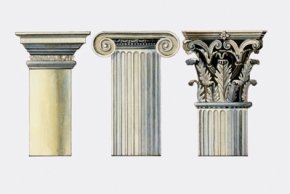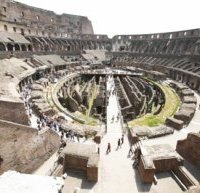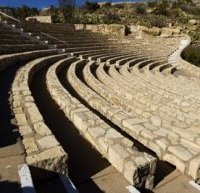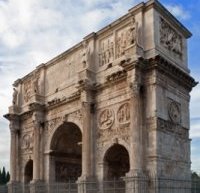
 Timeless Beauty!
Timeless Beauty!
Roman architecture is the perfect example of innovation and experimentation in construction; it gave mankind buildings that had never been seen before, a network of connecting roads which was marvelously executed, and public structures that could be used by people from all strata of society just as equally, which added to their appeal. It was called 'Roman Architecture' from 509 BCE to the 4th century CE, when the Roman Republic was in power. After that, it came to be renamed as the 'Byzantine Architecture'. It thrived greatly during the Pax Romana period, which was a time when there were no invasions or expansions. This period lasted for over 200 years, from 27 BCE to 180 CE.
Roman Architecture - An Overview
Influences
Ancient Roman architecture mainly drew its influence from Greek and Etruscan architecture, and also a little from Egyptian and Persian architecture. For example, it learned the use of hydraulics from the Etruscans, incorporated the obelisk from Egypt in various structures, and even used designs from different regions for the construction of Emperor Hadrian's Villa.
 Building Materials
Building Materials
Roman architecture saw a widespread use of concrete. The architects realized that concrete was not only stronger than marble, but it could also be decorated quite easily by sculpting various shapes on it. An added advantage was that it could be produced locally, which proved to be a very cost-effective option. Concrete was prepared using a mixture of lime mortar, water, rubble, stones, sand, and a rocky material called pozzolana. This mixture was poured between two wooden frames and allowed to dry. Once it dried, the wooden frames were removed from around it, and these could be reused. The resultant walls were quite strong and durable, and could also be decorated using marble, stucco, and even mosaic. Mosaic became extremely popular in Rome around the 1st century CE, and was used on a large scale in decorating ceilings, floors, and walls of buildings.
Highlights
The Romans created many masterpieces and brought architecture to a new level. Some of the main highlights of ancient Roman architecture are listed below. ✦ Construction of a vast and complicated road system is one of the main highlights of this period. The Romans built roads connecting all the cities to each other, and they all led to the capital. This made access to the cities very easy for the rulers.
✦ Construction of a vast and complicated road system is one of the main highlights of this period. The Romans built roads connecting all the cities to each other, and they all led to the capital. This made access to the cities very easy for the rulers.
✦ Construction of huge public places like the public baths was another prominent feature. As these buildings were open to the entire city public, they became quite popular. It was a place where people could get together and interact.
✦ Columns, arches, and domes became quite popular during this time. Various types of pillars were used, and they were decorated in many different designs.
✦ The Romans also built aqueducts, which were never seen before this era. Aqueducts, like pipes, canals, tunnels, etc., were built to provide water, drinking and otherwise, to the public.
✦ Bridges were also introduced during this time. This made it easier for people to travel to other cities safely, now that the danger of wading through the rivers had been eliminated.
Influences on Modern Architecture
Columns
There are mainly three types of columns: Doric, Ionic, and Corinthian.Doric, Ionic, and Corinthian Columns (L to R)
In Doric columns, the top is plain, without any decorations. The columns are fluted, which means that they have vertical ridges running down their length. They do not have a decorative base either, and are placed directly on the floor. For example, the columns used for the Federal Hall in New York City.Doric Columns, Federal Hall, New York City
Ionic columns are slenderer than Doric columns, and also have more number of flutes. They have a stone at the top, that is curled within itself like a scroll on both sides. These columns are not directly placed on the floor like Doric columns, but have a small base. For example, the columns used for the courthouse in Delaware County.




RELATED VIDEO












